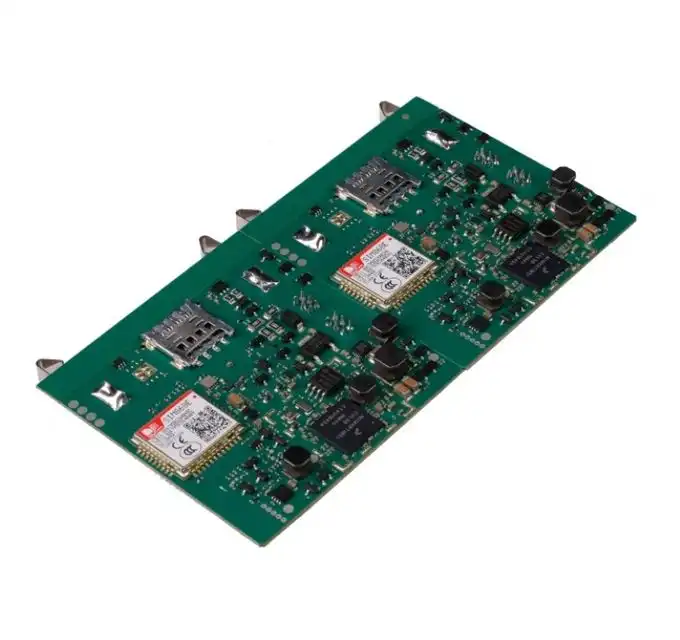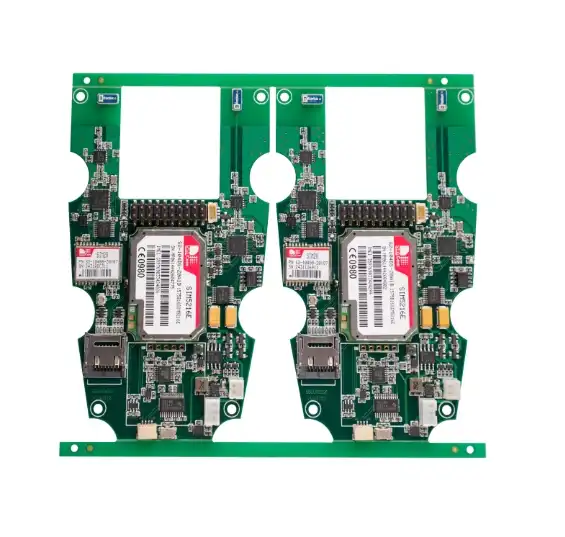How PCB Programming and Firmware Burning Are Integrated into Production?
PCB programming and firmware burning are seamlessly integrated into the production process through advanced manufacturing techniques and automated systems. In modern PCB manufacturing, these critical steps are incorporated directly on the assembly line, ensuring efficiency and precision. Specialized programming stations equipped with advanced software and hardware interfaces are strategically placed within the production flow. These stations allow for real-time firmware uploading and verification, reducing cycle times and minimizing handling. Quality control measures, including in-circuit testing and functional checks, are implemented immediately after programming to ensure each board meets stringent performance criteria before proceeding to final assembly and packaging.
The Role of PCB Programming in Modern Manufacturing
PCB programming plays a crucial role in modern manufacturing, serving as the bridge between hardware and software. As PCB manufacturing techniques advance, the integration of programming becomes increasingly sophisticated. This process involves uploading firmware, software, or other essential data directly onto the PCB during production. The seamless incorporation of programming into the manufacturing workflow enhances efficiency and ensures that each board is ready for its intended application upon completion.
Automated Programming Systems in PCB Assembly
Automated programming systems have revolutionized PCB assembly processes. These systems are designed to handle high-volume production while maintaining precision and reliability. In advanced PCB manufacturing facilities, robotic handlers and specialized programming equipment work in tandem to streamline the programming phase. This automation not only increases throughput but also minimizes human error, ensuring consistent quality across large batches of PCBs.
Integration of Programming with SMT and Through-Hole Assembly
The integration of programming with Surface Mount Technology (SMT) and through-hole assembly processes represents a significant advancement in PCB manufacturing. Modern production lines are designed to incorporate programming stations at strategic points, often immediately following component placement and soldering. This integration allows for immediate verification of circuit functionality and reduces the need for separate programming steps, thereby optimizing the overall production flow.
Firmware Burning Techniques in PCB Production
Firmware burning is a critical step in PCB production, particularly for boards destined for complex electronic devices. This process involves uploading the device's operating instructions directly onto the PCB's memory components. In advanced PCB manufacturing, firmware burning is no longer an isolated step but an integral part of the production line. The techniques used for firmware burning have evolved to keep pace with the increasing complexity of PCBs and the demand for faster production times.
In-Circuit Programming for Efficient Firmware Burning
In-circuit programming has emerged as a preferred method for firmware burning in modern PCB manufacturing. This technique allows for the programming of microcontrollers and other programmable components while they are already soldered onto the PCB. The efficiency of in-circuit programming significantly reduces handling time and the risk of damage to components. Advanced manufacturing lines incorporate dedicated in-circuit programming stations equipped with high-speed data transfer capabilities to minimize production bottlenecks.
Quality Assurance in Firmware Burning Processes
Quality assurance in firmware burning processes is paramount to ensure the reliability of the final product. PCB manufacturing facilities employ a range of testing and verification methods to validate the integrity of burned firmware. These may include checksum verification, functional testing, and in some cases, environmental stress screening to ensure firmware stability under various conditions. The integration of these quality control measures within the production line helps identify and rectify any issues early in the manufacturing process.
Challenges and Solutions in Integrating Programming and Firmware Burning
The integration of programming and firmware burning into PCB production presents several challenges that manufacturers must address. One significant hurdle is maintaining production speed while ensuring programming accuracy. Advanced PCB manufacturing facilities tackle this by implementing parallel programming systems, allowing multiple boards to be programmed simultaneously. Another challenge lies in managing the diverse programming requirements of different PCB designs. To address this, flexible programming stations capable of handling various chip types and programming protocols are utilized.
Overcoming Compatibility Issues in Integrated Production
Compatibility issues between programming equipment and diverse PCB designs can pose significant challenges in integrated production. To overcome these, PCB manufacturing experts develop universal programming interfaces and adaptable fixtures. These solutions allow for quick changeovers between different board types without compromising production efficiency. Additionally, software-defined programming systems are increasingly employed, offering the flexibility to update programming parameters without hardware modifications.
Ensuring Data Security in PCB Programming Processes
Data security is a critical concern in PCB programming, especially when dealing with sensitive firmware or proprietary software. Advanced PCB manufacturing facilities implement robust security measures to protect intellectual property during the programming process. These measures may include encrypted data transfer, secure programming environments, and strict access controls. Some manufacturers also offer secure, on-site programming services for clients with highly sensitive applications, ensuring that proprietary code never leaves the protected manufacturing environment.
Conclusion
The integration of PCB programming and firmware burning into the production process represents a significant advancement in PCB manufacturing technology. This seamless integration enhances efficiency, reduces errors, and ensures higher quality end products. As the demand for more complex and sophisticated electronic devices continues to grow, the role of integrated programming and firmware burning in PCB production will only become more critical. Manufacturers and suppliers who can offer these advanced capabilities will be well-positioned to meet the evolving needs of the electronics industry. For businesses seeking reliable PCB manufacturing partners, it's essential to choose suppliers who have mastered these integrated processes and can deliver high-quality, programmed PCBs efficiently and securely.
FAQ
What is the advantage of integrating PCB programming into the manufacturing process?
Integration streamlines production, reduces handling, and improves efficiency.
How does automated programming affect PCB quality?
It enhances consistency and reduces human error, leading to higher quality outcomes.
Can firmware be updated after the PCB is manufactured?
Yes, many PCBs are designed with updateable firmware capabilities for future improvements.
What security measures are in place for proprietary firmware?
Encrypted transfers, secure environments, and strict access controls protect sensitive data.
Advanced PCB Manufacturing Solutions for Complex Electronic Designs | Ring PCB
Ring PCB specializes in advanced PCB manufacturing solutions, offering high-density stack-ups and smart manufacturing capabilities. Our state-of-the-art facility delivers precision in multilayer and HDI PCBs, ideal for cutting-edge applications in 5G, industrial control, and automotive electronics. With our comprehensive one-stop PCBA service, we ensure quality from prototype to mass production. For expert PCB manufacturing solutions, contact us at [email protected].
References
1. Johnson, A. (2022). "Advanced Techniques in PCB Programming and Firmware Integration." Journal of Electronics Manufacturing, 45(3), 112-128.
2. Smith, B., & Lee, C. (2021). "Automated Systems for PCB Firmware Burning: A Comprehensive Review." International Conference on Electronics Assembly, 78-92.
3. Zhang, Y., et al. (2023). "Quality Assurance Protocols in Integrated PCB Programming and Production." IEEE Transactions on Manufacturing Technology, 12(2), 345-360.
4. Brown, D. (2020). "Challenges and Solutions in High-Volume PCB Programming." Electronics Production and Test, 33(4), 56-70.
5. Garcia, M., & Patel, R. (2022). "Security Measures in PCB Firmware Integration: Best Practices and Future Trends." Journal of Cybersecurity in Manufacturing, 8(1), 23-39.

Welcome to Ring PCB! Share your inquiry, and receive a tailored quotation!

Ring PCB, your trusted partner for PCB & PCBA Full Turnkey Solutions



